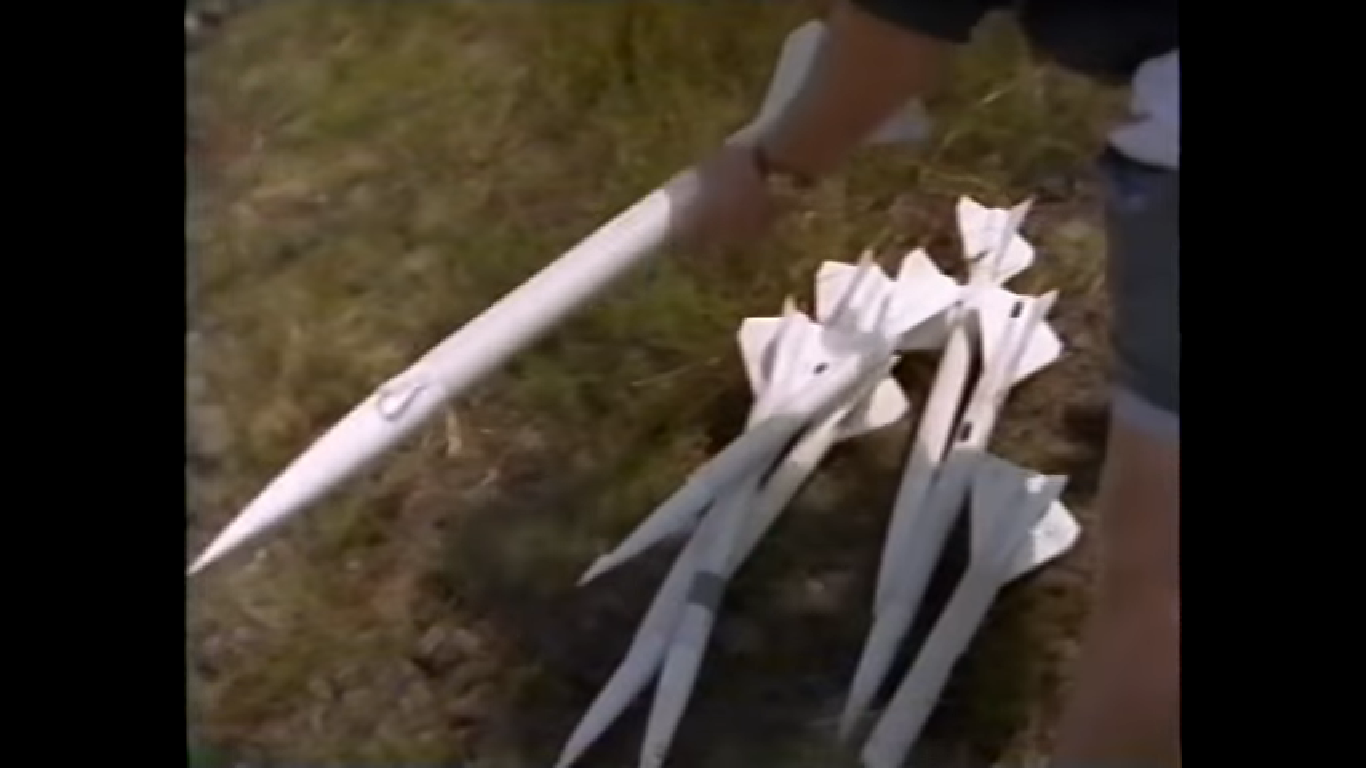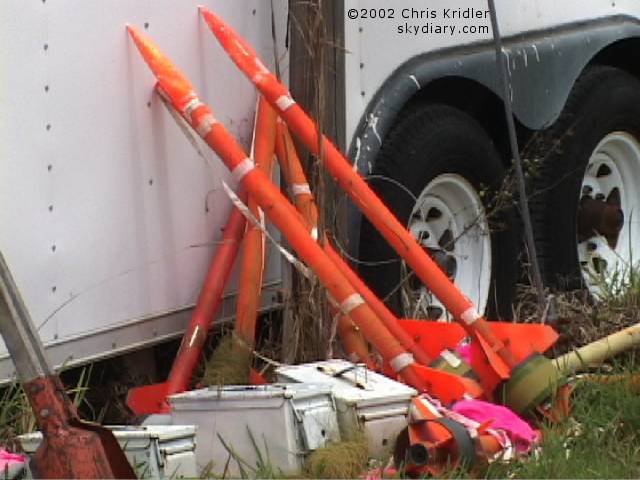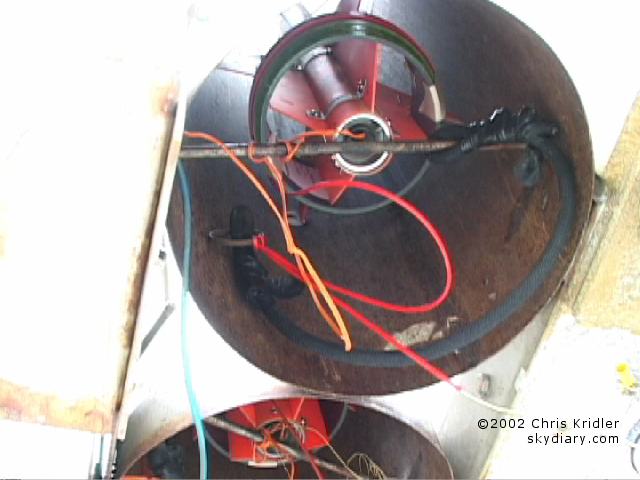Was poking around on this subject again, and found an old episode of PBS's NOVA series (ca. 1995) that clearly shows most one of the rockets. I wondered if/how they recovered the rockets, or if they were vaporized in the launch. Looks like they come in ballistic, and are built to take it (the field they use looks to have a loose sandy soil). My rough eyeball measurements make the rocket out to be about 2" in diameter, with 4 (opaque) fins that fit inside an 8" pipe. The wire spool looks to be 4" in diameter, and maybe 3.5" long. The yellow nosecone appears to be translucent, and has 3 wire arcs that protrude from it and keep the rocket centered in the tube. The rocket overall looks to be primer gray, and does have markings.

Later in the same episode, another experimenter is seen in the episode... We get better images of the rockets, but they look like a standard design, and could be for just about any other naked rocket seen on a launch field.

[video=youtube;mNp9o5Gsoy8]https://www.youtube.com/watch?v=mNp9o5Gsoy8[/video]
Newer videos of the Florida team I've seen, such as a BMW advertisement from 2017, shows that their design has changed. The fins to now are a translucent orange or red color, perhaps made of fiberglass, and the overall shape has changed.


[video=youtube;7dALAe58Fhw]https://www.youtube.com/watch?v=7dALAe58Fhw[/video]
I'd really love to build a couple of these as an homage to the science, but within NAR/TRIPOLI rules. (READ: NOT for actual lightning experimentation) I still have all of my parts that I managed to escape infancy with (I lost a part in infancy that I really would have rather kept), and I'm not in the mood to lose any more, or have them damaged in any way.
Remember boys and girls... Leave Lightning to the experts. Seek cover if you hear thunder.















